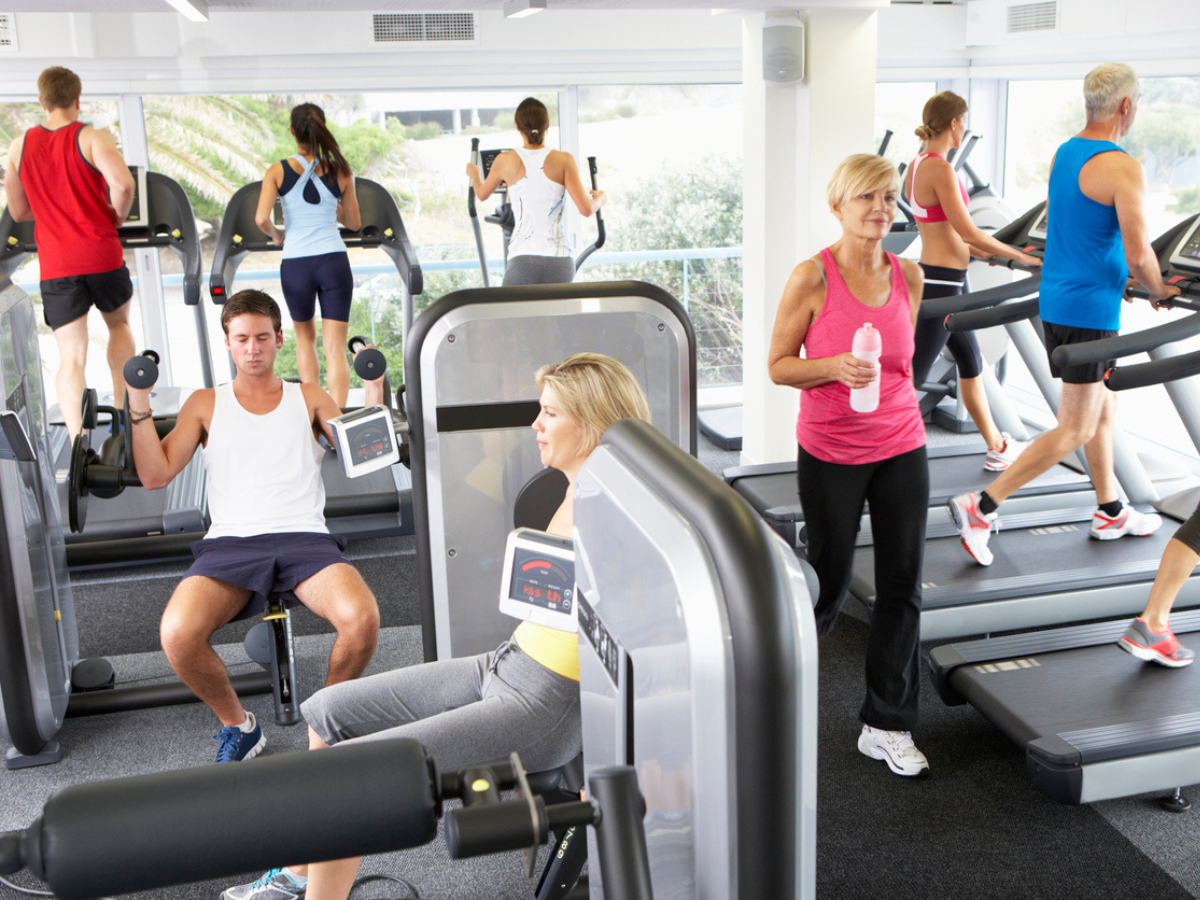Fitness
These 11 health benefits of regular exercise will convince you to get moving

In a world full of fitness fads, there exists a powerful way that promises not just physical vitality but holistic well-being – regular exercise. The simplest and best way to keep all your health woes at bay. Imagine this – one single thing can awaken your muscles from a slumber, help your mind be at peace, and improve your overall well-being. Whether you’re a fitness guru or just someone looking for ways to get fit, regular exercise is your best friend. Having said that, let’s understand why regular exercise is important and its benefits.
What are the health benefits of regular exercise?
Health Shots asked fitness trainer Yash Agarwal to understand the benefits of regular exercise that you need to know:
1. Promotes heart health
Being physically active is crucial to promote heart health. A study published in Frontiers in Cardiovascular Medicine found that exercise prevents both the onset and development of heart disease. It has also been found that regular exercise helps improve the heart’s ability to pump blood and helps strengthen it. Agarwal adds that it helps lower blood pressure levels and cholesterol levels, both of which are risk factors for developing cardiovascular disease.
2. Helps in weight management
Regular exercise not only helps you shed the extra kilos but fills your body with energy, and confidence and boosts overall health. The fitness expert says that it helps lose weight by burning calories, building lean muscle, and increasing metabolism. A study published in the Journal Progress in Cardiovascular Diseases found that people who exercised more than 200 per week than those who exercised for less time.
3. Boosts mental health
Have you been feeling depressed? Have you been anxious lately? A study published in the Journal of Clinical Psychiatry found that regular exercise helps reduce anxiety, and depression and improve mood by improving self-esteem and cognitive function. It does so by releasing endorphins, which promote feelings of happiness and reduce stress.
4. Strengthens bones and joints
Exercise is important to build and maintain strong muscles and bones. According to the National Institute of Arthritis and Musculoskeletal and Skin Diseases, regular exercise helps strengthen bones in children and adults, helping reduce the risk of diseases like osteoporosis. It is also believed to strengthen your muscles and decrease the risk of injuries.
5. Better sleep
Agarwal says that regular exercise can also enhance sleep quality and even help with problems insomnia. Regular exercise can have moderate to strong positive effects on overall sleep quality, according to a study published in the Journal of Advances in Preventive Medicine.

6. Helps manage blood sugar levels
High levels of blood sugar can be damaging to your health and can lead to problems like diabetes. It can even harden your blood vessels and increase the risk of atherosclerosis – a buildup of cholesterol, fats, and other substances in artery walls that can block blood flow. The fitness expert says that one of the many benefits of regular exercise is managing blood sugar levels. Even studies have found the positive effects of exercise on blood sugar levels.
7. Improves cognitive function
Exercise helps boost memory and cognitive function, says the expert. In fact, studies such as one published in Frontiers in Psychology found that regular exercise benefits both cognitive functioning and well-being.
8. Strengthens immunity
It is crucial to boost your immune system during such times as it reduces your chances of likelihood of illness. As per a study published in the Journal of Sport and Health Science, regular exercise helps improve immune regulation, which can help delay the onset of age-related dysfunction.
9. Good for digestive health
When you exercise regularly, the blood flow to the muscles in the digestive system increases, which aids digestion and even reduces the risk of constipation. So, the next time you face gut issues, you know what you’ve to do!
10. Increases longevity
Exercise has been proven to extend lives as well. Agarwal also points out that regular exercise has been associated with a longer, healthier lifespan. As per the analysis published in the Journal of Aging Research, eight different cohorts suggest that regular physical activity has been associated with increased life expectancy.

11. Reduces cancer risk
Being physically active reduces cancer risk of several types, as per a study published in the Medicinal Science Sports Exercise. However, it doesn’t guarantee a free pass, you have to follow a holistic lifestyle to live a healthy and disease-free life.
Keep in mind!
Regular exercise is a good way to stay healthy, however, it’s not a sure-shot way to live a disease-free life. The benefits depend on the type and intensity of exercise, as well as individual factors. It is important to consult your healthcare provider before making any changes in your lifestyle, especially if you have health concerns.

Fitness
Americans need more exercise—and should be able to tap FSA and HSA funds to pay for gyms, studios, and sports leagues

Exercise matters. In the battle against America’s rising tide of overweight and obese youth, increasing mental health concerns, and growing threat of chronic disease prevalence, the simplest prescription is movement—every step, every workout, every sport and physical activity improves physical and mental health.
What’s more, the ramifications of childhood obesity are profound, ranging from cardiovascular issues to heightened diabetes risk, as highlighted by the Government Accountability Office. With health care costs rising and cultural influences promoting sedentary lifestyles, the imperative to act has never been more urgent.
The future of our country is inextricably tied to our ability to move, and it is necessary for all of us—lawmakers, parents, educators, small business owners, employers—to embrace and support physical activity as a necessary component of health care.
The Health & Fitness Association, a trade group I lead, is this week releasing new data illustrating the economic powerhouse the health and fitness industry has become—and the vital role it plays in our economy. This first-of-its kind data demonstrates why the industry deserves a seat at the table, alongside government and health care leaders, as we continue to advance toward preventive—not prescriptive—care.
The data reveals that local health and fitness establishments collectively employ over 430,000 workers across 55,000 locations, injecting over $22 billion directly into our local and national economy while also strengthening the American middle class. Furthermore, the Health and Fitness Association also reports that across the nation some 70 million consumers regularly use industry facilities—health and fitness clubs, gyms, studios, sports and aquatic facilities, camps, and industry partners.
Empowering busy parents, educators, and students to embrace this ethos requires innovative solutions. One such solution lies in extending financial support for physical activity and equipment through flexible and health spending accounts (FSAs and HSAs), mirroring the approach taken with numerous other consumer health products.
Flexible Spending Accounts (FSAs) and Health Savings Accounts (HSAs) are tools for managing health care expenses, but they differ from traditional ones. FSAs, provided by employers, allow pre-tax contributions, but funds expire at year-end, with any remaining balance reverting to the employer. HSAs, for those with high-deductible health plans, offer tax-deductible contributions, potential growth, and rollover funds, providing flexibility and long-term savings potential.
We’re collaborating with national leaders to champion bipartisan legislation called the Personal Health Investment Today (PHIT) Act, aimed at expanding families’ access to all manner of physical activity programs and equipment, for both youth and adults alike. Under it, FSAs and HSAs could be used to pay for health club memberships, fitness equipment, exercise videos, and youth sports leagues. If passed, it would enable individuals to use up to $1,000 per year—up to $2,000 for families—to cover physical activity-related expenses.
The proposed legislation extends coverage to these expenses for employees, aligning with the model through which millions of Americans already purchase over-the-counter health products, such as cold and pain relievers. By streamlining access to these resources, we can combat the troubling statistics outlined by the Centers for Disease Control, where only a fraction of children meet the recommended levels of daily exercise and rates of obesity continue to soar, especially among communities of color.
Harnessing FSAs and HSAs for exercise initiatives is a logical extension of existing practices, given that these accounts already support a myriad of health-related services and products. Physical activity stands as a universally accessible tool for enhancing both physical and mental well-being, making its inclusion in these programs not only sensible but essential.
Additionally, expanding eligibility to encompass youth sports programs and fitness courses for adults, as proposed by the PHIT Act, makes good financial sense because millions of Americans who use FSA and HSA benefit accounts leave leftover funds in the accounts at the end of the year—funds that most consumers do not know revert to their employer.
Beyond the realms of family and youth fitness, such measures hold the potential to address broader societal challenges, including military readiness, where obesity rates have hindered recruitment in recent years.
The federal government already recognizes the importance of using federal policy and support to encourage and empower consumers to take action.
This year will be the first time physical activity expenses are eligible as qualified expenses for many HSAs when prescribed for medical necessity. This new tax treatment is a great first step for empowering employees to leverage their funds in order to combat a critical health care challenge in our society. Now is the time to fully embrace physical activity and take the investment in our country’s overall well-being to the next level. We know it can be done.
Expanding access to fitness programs through taxpayer-funded initiatives represents a commonsense approach whose time is overdue.
Every week, some 70 million consumers from ages 8 to 80 visit more than 55,000 different types of gyms, studios, and other fitness facilities because they know and experience the physical and mental health benefits of exercise. Federal policy should help expand access and encourage good habits like these—it would benefit all of us in the long run.
Let’s seize this opportunity to empower individuals of all ages to embrace a lifestyle of movement, vitality, and well-being. The future of our country—and our economic lives—depends on our ability to take bold action and embrace a sensible, scientific approach to empowering a population that is healthy, able to face today’s obstacles, and prepared for the tomorrow’s challenges.
Liz Clark is president and CEO of the Health & Fitness Association, a trade group representing health and fitness facilities, along with their partners and suppliers. She’s the first woman to head the organization in its 40-year history.
More must-read commentary:
The opinions expressed in Fortune.com commentary pieces are solely the views of their authors and do not necessarily reflect the opinions and beliefs of Fortune.
Fitness
Gainesville Health and Fitness: Dumbbell rows

GAINESVILLE, Fla. (WCJB) – If you’re looking to work out your back muscles, dumbbell rows could be a great workout for you.
On this week’s Gainesville Health and Fitness, we’ll show you how to get in position for this exercise.
RELATED: Gainesville Health and Fitness: Stress relief exercises
Click here to subscribe to our newsletter.
Copyright 2024 WCJB. All rights reserved.
Fitness
Promoting Health, Fitness in Holtville — This is The Way – Calexico Chronicle

HOLTVILLE — In a scene of organized chaos, the Mandolorian led Holtville youths down East Sixth Street as they made their way to Finley Elementary School, walking and riding bikes, scooters and rollerblades to promote healthier habits.
National Bike and Roll to School Day is a nationwide event that schools can participate in anytime during the month of May, with the official day marked for May 8. Holtville chose Friday, May 3, where students and many adults wore their favorite “Star Wars” T-shirts, hats and Grogu gear to celebrate “Star Wars” Day (May the Fourth), which is always the town’s theme for the activity, a decision made years ago by the man beneath the Mandolarian’s helmet, Holtville Fire Chief Alex Silva.
“About five or six years ago, we noticed there was an actual ‘Ride Your Bike to School’ event and we wanted to join in on it,” Silva said, explaining more about the event’s origin.
“We started originally as walking to school only, and the original plan was to meet the deputies and the firefighters and it spread to this,” he said pointing around at all the childrens’ bikes.

Silva wore the custom-made Mandolorian helmet for his bike ride, a 3-D printed masterpiece crafted by his son, leaning into the fictional fun with the kids. “Since it’s in May, we decided to make it ‘Star Wars’-themed. I love ‘Star Wars,’” he explained, “So I said, let’s make it every year near May 4 for ‘May the Force be with you.’”
The Imperial County Sheriff Department was present to ensure safety of the large group, with deputies talking with students and providing assistance by blocking cross-street traffic during the ride. The rest of Silva’s fire crew supervised and gave kids high-fives of encouragement while the crowd made their way down the street. All the adults worked together, providing an epic way for the youths to start their Friday.
This is the Way
The morning began with a group warm up before the ride, with Silva leading the Emmett S. Finley Elementary School students. Backpacks and bikes were parked around the edge of the basketball court while students spread out ready to follow the Mandolorian (Silva) through some warm up moves before taking to the streets. Lined up by grade, the students gathered like a bunch of cute little ewoks, ready for action.


One parent and staff member at the elementary school, Linda Serrano, said, “I’ve been coming to Finley for 13 years and I’ve never made it to this, so I’m happy to be here.”
Serrano was standing outside the Ralph Samaha basketball court before the ride began, alongside other parents, siblings, and school staff, watching the kids stretch as a group before the ride began.
See also


“It teaches them — the parents and the kids — to do an activity together, and promotes exercise and learning some safety too,” Serrano explained, talking about the event.
The youths warmed up with some jumping jacks and full-body stretches, laughing along to various jokes Silva tossed their way. Marco Page, Finley Elementary’s principal, was stretching on the sidelines supporting the cause alongside his students and a couple other staff members.
After the event he commented briefly, saying, “It’s another health initiative, just to promote the students to be healthy.”
Page said the school advertised in the weeks leading up to Friday, handing out flyers to students and promoting the event on social media as well.


-

 News1 week ago
News1 week agoBoth sides prepare as Florida's six-week abortion ban is set to take effect Wednesday
-

 Politics1 week ago
Politics1 week agoGOP Rep. Bill Posey won't seek re-election, endorses former Florida Senate President as replacement
-

 World1 week ago
World1 week agoRussian forces gained partial control of Donetsk's Ocheretyne town
-

 World1 week ago
World1 week agoZelenskyy warns of Russian nuclear risks on Chernobyl anniversary
-

 Politics1 week ago
Politics1 week agoHouse Republicans brace for spring legislative sprint with one less GOP vote
-
Movie Reviews1 week ago
Challengers Movie Review
-

 World1 week ago
World1 week agoAt least four dead in US after dozens of tornadoes rip through Oklahoma
-

 Politics1 week ago
Politics1 week agoAnti-Trump DA's no-show at debate leaves challenger facing off against empty podium





















